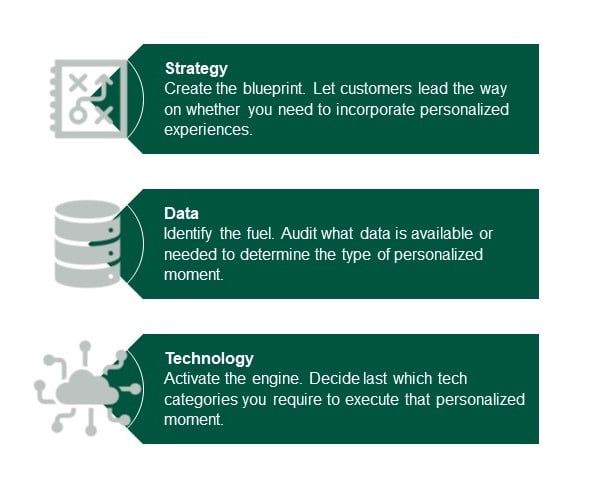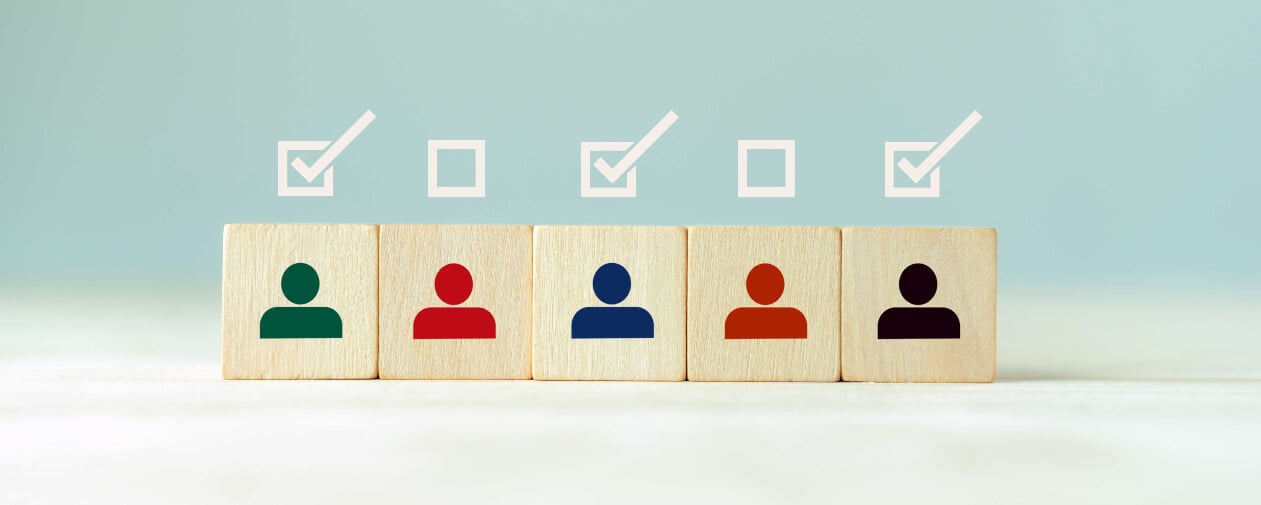85% of B2B buyers say the buyer experience is as important as the product or service. But the scramble to fight inflation, in addition to other issues such as shipping delays and labor shortages, can hamper a holistic B2B sales strategy—one that enhances customer relationships and builds loyalty through personalized customer experiences.
The rise of digital commerce has given vendors greater access to customer behavior data and consumers more exposure to personalization practices. In a 2022 Salesforce report, 73% of respondents said they expect companies to understand their unique needs and expectations.
In whatever way customers interact with you—from web to mobile to in-person conversations—they now perceive personalization as and expect it to be the default standard for engagement.
According to Forrester, personalization takes many forms across the customer lifecycle. “Some companies might simply insert a person’s name into outbound content. Others go further and engender loyalty by understanding a customer’s needs and interests and creating an individualized post-purchase experience.”
Personalization is not a one-and-done activity, nor is it limited in scope to a single organizational department or team. Personalized interactions before, during, and after a purchase necessitate a corporate-wide commitment to maximizing its potential so they can compete on a level playing field.
But why is personalization so important? Does it really pay off? How does it benefit a company’s bottom line?
Strengthen Customer Relationships
Personalization is a feel-good interaction that lets consumers know they are special and appreciated. Personalized messaging can be simple yet effective and may include making relevant product or service suggestions, offering a targeted promotion, or celebrating a life milestone. It should go without saying that timing is of the utmost importance.
Thoughtful actions such as checking in post-purchase, sending a how-to-video, or requesting an online review will give customers a positive brand perception.
But don’t just think of these exchanges as transactions with customers. Think of them as opportunities to invest in a relationship. Otherwise, they may seek out another vendor they feel is invested in them and in building a long-term, mutually fruitful engagement.
Increase Conversation and Market Share
Sellers that offer the most tailored outreach are 1.7 times more likely to gain market share than those pursuing only moderate personalization efforts.
In times of economic uncertainty, consumers are on the lookout for lower prices and are more apt to consider switching brands. Don’t let it happen! Instead, let your customer know at every touchpoint that you are there for them. Respond to their questions in real time. Go out of your way to keep them updated on relevant product discounts and delivery status on current purchases. Direct them to customized landing pages and content that is pertinent to their interests and pain points.
Your willingness to engage with customers at all stages of their journey helps build trust in your brand, resulting in higher conversation rates.
Improve Retention
Personalization is an effective means of supporting the expansion of customer lifetime value. For instance, offering compelling reasons for an upsell at the right time shows you have gained an in-depth understanding of the customer and an appreciation for their business problems and that you are taking a personal interest in them. If your business interactions are meaningful and your engagement is tailored to each customer’s needs, customers will lean toward spending more money with you and remain loyal.
3 Steps to Activate Personalization
To successfully incorporate personalized moments into customer experiences, according to Forrester, businesses need a strategy to plan, data to power it, and technology to execute it.

Source: Forrester
5 Ways to Accelerate Personalization
Even a small shift toward greater customer intimacy can bring big results, but success comes from looking at personalization as an organization-wide effort to drive long-term growth and customer lifetime value.
Here are five things outperformers can do to accelerate personalization and create value:
Lean into data and analytics to identify opportunities. Build a granular view of where there is the most value across the customer lifecycle. Leverage customer segments and microsegments, and factor in behavioral, transactional, and engagement trends. Use this to define and quantify personalization objectives and to ground efforts in customer-centric key performance indicators (KPIs).
Invest in rapid activation capabilities powered by advanced analytics. Leverage predictive analytics to determine what content and messages to serve which customers (for example, propensity models, or predictive next-best-action algorithms). Establish robust processes to measure the impact of customer intervention and use AI-driven decisioning helps you respond to customer signals in real-time at each step to the consumer’s journey.
Invest in fit-for-purpose martech and data. Target a specific set of customer outcomes and use cases that support them. Align organizational resources around these use cases and work back from the desired outcomes to build the data and martech road map and identify the enablers and investments needed to deliver.
Commit to an agile operating model. Align teams around hubs such as marketing, product, analytics, and technology, with each team owning specific elements of the personalization journey. Each team is a “spoke” responsible for use cases enabled by advanced data analytics and test-and-learn techniques.
Invest in talent and training to refine capabilities. Map the capabilities necessary to support personalization at scale, such as digital acumen, product management, and performance marketing against your current talent base and use it to inform hiring, training, and upskilling.
Ready to talk?


